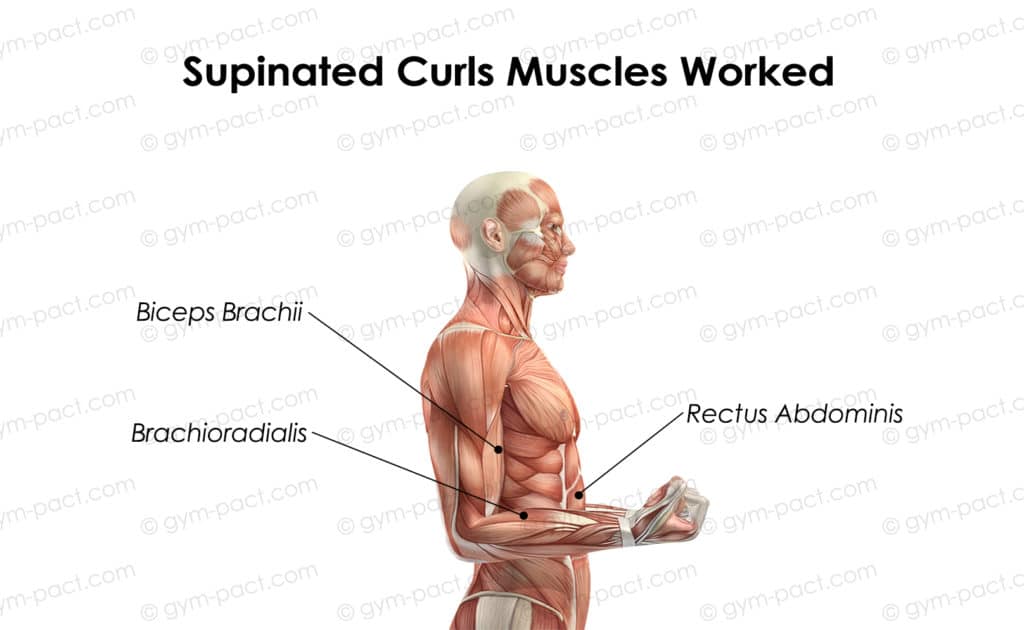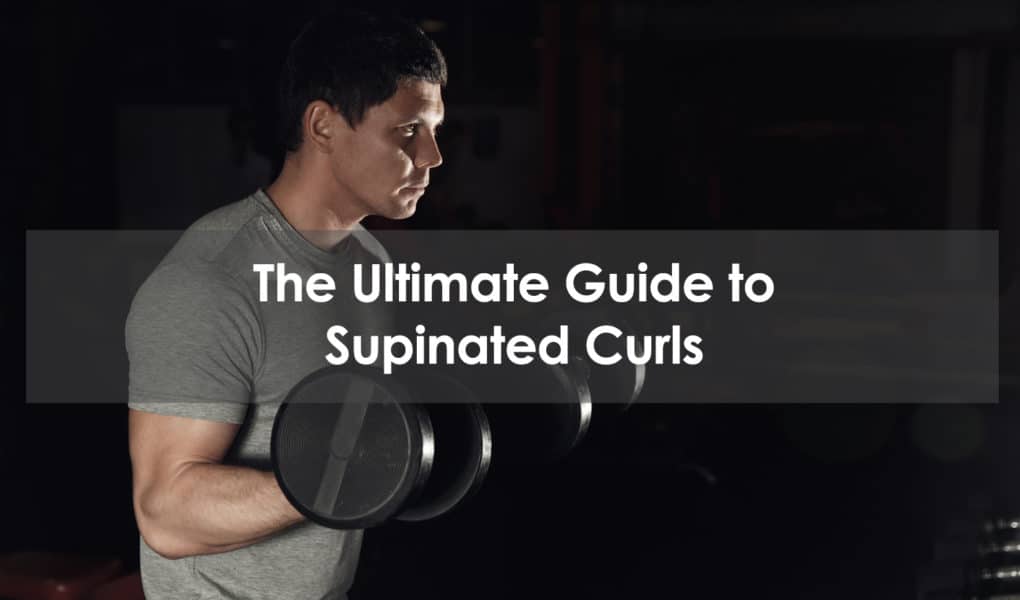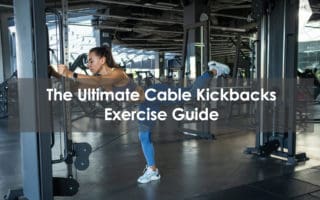Building bicep strength and size is a key goal for many weightlifters, fitness enthusiasts, and gym-goers, and one of the most effective ways of achieving this is to perform bicep curls. That much isn’t anything new, but what some people aren’t aware of is just how many variations of curls there are.
You have your standard barbell curl or dumbbell curls, and then there are modifications like the hammer curl and preacher curl. Each different form of curl will have its own benefits and limitations, and the same goes for the supinated bicep curl.
Here, we’re going to dive into everything you need to do about supinated curls, from the benefits of this exercise right through to how to perform it safely and correctly.
Benefits of Supinated Curls
As you’ll soon see, the supinated curl movement is a pretty simple one and does not take long to learn and get used to. This lowers the chances of injury and also makes this an effective exercise for people at any fitness level.
Despite its simplicity, supinated bicep curls are an excellent way of building size and strength in your upper arms, mainly in your biceps. This can help people achieve aesthetic goals of developing more defined or larger arms, but it can also help with performance in other lifts and sports.
Your performance in activities that involve force from your arms like rowing, throwing, or pushing will likely improve the more you perform the supinated dumbbell curl, as you are developing key muscles for these movements.
Performing this exercise on a consistent basis will also improve your overall curl form, meaning you can more effectively include other curl variations in your workouts to ensure you are being as comprehensive as possible when it comes to training your arms.
Muscles Worked

The supinated dumbbell curl primarily targets your bicep muscle, which is comprised of two heads. Both heads are engaged during the curling movement and produce almost all of the force necessary, making the supinated curl an isolation exercise, more specifically a biceps exercise.
Related Post: 5 Shirt-Busting Short Head Bicep Exercises
That being said, there are other muscles involved. Your brachioradialis, the main muscle in your forearm, becomes activated during the supinated dumbbell curl to aid with stability. Similarly, your abs and some muscles in your lower back will also get involved, however, you will need to ensure that they aren’t overexerted while performing the curls.
Related Post: 5 Best Long Head Bicep Exercises For Massive Arms
How to Perform Supinated Bicep Curls
- Stand straight with a neutral spine and hold a dumbbell in either hand by your sides, with your arms straight and a slight bend in the elbow. Turn your hands so that your palms are facing outward, away from you – this is known as a supinated grip, and is where this curl gets its name from. They’re also sometimes known as underhand bicep curls.
- Bend at your elbows and curl the weights up toward your chest. Squeeze your biceps at the top of the movement.
- Slowly lower the dumbbells back down to the starting position and repeat for 12-15 reps.
Tips
- Keep your elbows pinned close to the sides of your body and focus on moving the weight through the same range of motion with each curl.
- Breathe in as you curl the weights up and breathe out again as you lower them back down. You should spend two seconds lifting them up and another two seconds lowering them back down on each curl. This ensures you are working with the appropriate time under tension.
- If you’re new to dumbbell curls, start out with a lighter weight until you’re fully comfortable with the movement, then begin to gradually use heavier weights.
- If you begin losing your form during a set, then stop rather than finishing the reps with incorrect form, just to minimize the chances for injury to occur.
Mistakes to avoid
- Do not allow your back to become rounded while performing the curls. Your upper body should be straight with your spine neutral, meaning your shoulders should be drawn back and your chest proud.
- Do not use the momentum of your body to perform the curls. If you find you need to almost swing your body slightly to lift the dumbbells up, then use a lighter weight to perfect your form.
- Further still, avoid lifting too heavy. It’s always better to perform perfect reps with a light weight than it is to perform incorrect curls with a heavier one.
Variations
Though the most common form of this move is the supinated dumbbell curl, you can also perform these with a barbell. These will still be just as effective in muscle building and the change in equipment does not make this a lesser bicep exercise.
The setup and execution are the same, it’s just that you’ll be holding a barbell with a supinated grip, rather than a pair of dumbbells.
If you’re sticking with the supinated dumbbell curl, you could lift one weight at a time and alternate with each rep. This helps you focus on the form in each arm, in particular your non-dominant arm, which can help prevent muscle imbalances.
Related Post: Barbell Curl vs Dumbbell Curl – Which One is Better For You?
Final Thoughts
Though there are plenty of alternative bicep exercises, adding the supinated curl to your arsenal will help you maximize your gains in the upper arm muscle. Though it may seem like a basic exercise, this curl variation is excellent for building strength and size.
Frequently Asked Questions
How should your wrists be when curling?
Your wrists should remain straight and strong while performing curls, whether it’s with dumbbells or a barbell. If your wrists are curling forward or bending backward while executing the exercise, then you’ll likely need to use a lighter weight so that you can keep them strong.
This is to avoid injury but also to ensure that it is still your biceps that are doing the work.
Which is better, hammer curls or bicep curls?
Hammer curls are technically a form of bicep curls, they just have you keep your palms facing toward each other during the entire movement. Both are excellent exercises for strengthening your biceps, though hammer curls sometimes allow for the use of heavier weight as there is no rotation of your hands at any point.



